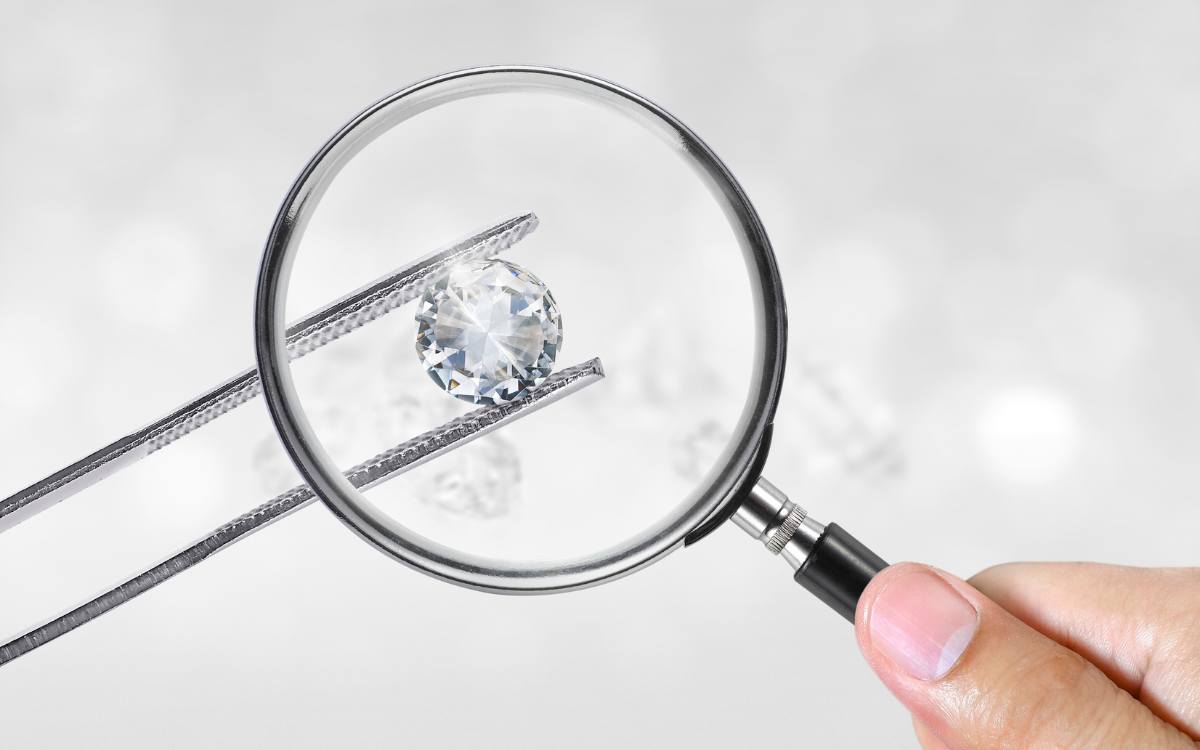
A Beginner’s Guide to Buying GIA-Graded Diamonds
Whether you’re seeking an engagement ring with a striking diamond, or exploring a newfound love for diamond earrings, the 4Cs are your starting point to understanding what determines diamond quality: Carat, Cut, Colour, and Clarity.

These four factors combined form the globally accepted system for assessing the value and brilliance of natural diamonds, providing consumers with a framework to compare quality and understand exactly what they’re purchasing, thanks to GIA grading certificates with matching serial numbers (more on this later).
First, let’s explore the origins of the 4Cs and each criterion in detail to help you find a diamond you can proudly show off in your diamond pendant or timeless engagement ring.
The 4Cs were conceived in the 1940s, when the founder of the Gemological Institute of America (or GIA, as it’s commonly known), created the term to help his gemology students remember the four metrics for characterising a faceted diamond: Carat, Cut, Colour and Clarity.
Prior to this simple but revolutionary grading system, terms such as river or water were used to describe the most colourless diamonds, with Cape assigned to pale yellow diamonds from South Africa’s Cape of Good Hope region.
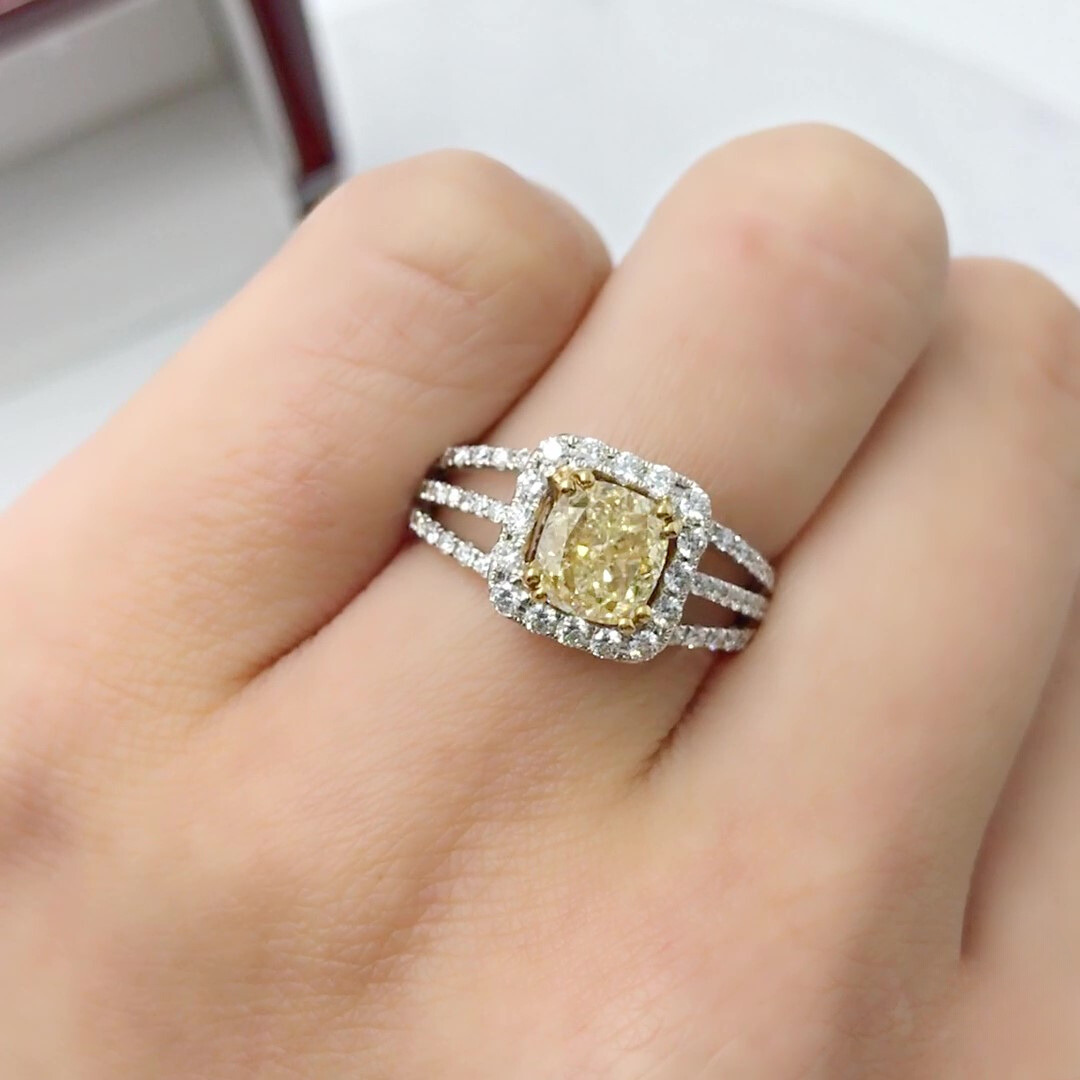
Similarly, prior to the 4Cs, a diamond’s cut was inadequately described as either “made well” or “made poorly”.
From this rudimentary starting point, the following GIA President developed the 4Cs to include the universally-utilised scientific methods and procedures we use today for objectively grading a diamond’s quality; the GIA D-to-Z Color Scale; and the GIA Flawless to 13 Clarity Scale.
The GIA’s 4Cs grading system is now trusted by museums, auctions houses, and consumers all over the world.
Which of the 4Cs matters most?
The most important of the 4Cs is often considered to be cut, due to its influence on a diamond’s brilliance, sparkle, and overall appearance. Even if a diamond has excellent colour, clarity, and carat weight, a poor cut can dramatically diminish its visual appeal.
With this in mind, it's important to strike a balance between all 4Cs to find an affordable engagement ring that meets your preferences and budget, while still maintaining a high level of overall quality.
While the 4Cs were initially developed for diamonds, they have since become widely adopted as a standard for assessing the quality of various coloured gemstones as well.
The specific considerations within each "C" may vary depending on the type of gemstone, but the overall concept of evaluating cut, colour, clarity, and carat applies to many gemstones beyond diamonds, including sapphires, emeralds and ruby jewellery.
Carat refers to the weight of a diamond and is often associated with its size. One carat is equivalent to 200 milligrams, and diamonds are commonly measured in points, with one carat equal to 100 points.
While it's easy to assume that a higher carat weight means a more valuable diamond, other factors come into play. The size of a diamond should be considered in conjunction with the other 3Cs to fully understand its overall value. Some diamonds may appear larger than their carat weight suggests due to their well-executed cut.
Let’s look at each of the 4Cs in detail…
Carat: The Measure of Diamond Weight


What is the most popular diamond carat size for an engagement ring?
At SH Jewellery Melbourne, the most popular diamond carat size for our exclusively designed solitaire engagement rings is 1ct. A 1-carat diamond in a classic engagement ring creates a substantial look for a single-diamond design.
What is the most popular carat size for diamond stud earrings?
The preferred carat size for everyday diamond earrings is usually between 0.40ct and 1ct per side/per diamond. For more formal events, like weddings and award ceremonies, our Melbourne customers usually choose between 0.90ct and 2ct per side/per diamond to provide maximum WOW factor and sparkle.
Cut is a critical factor that directly influences a diamond's sparkle and brilliance. It encompasses the precision with which a diamond is shaped and faceted, including the angles and proportions.
A skilled diamond cutter can transform a rough stone into a dazzling gem by strategically placing facets to allow light to reflect and refract within the diamond.
The cut of a diamond is graded on a scale from Excellent to Poor. A well-cut diamond will exhibit a beautiful play of light, while a poorly cut diamond may appear dull and lacklustre, despite having good colour and clarity.
Achieving the perfect cut requires a delicate balance to maximise diamond fire and brilliance.
Cut: The Artistry of Diamond Faceting
Do the 4Cs only apply to Round Brilliant Cuts, or Fancy Cut diamonds, too?
While the 4Cs are commonly associated with Round Brilliant Cut diamonds, they are applicable to Fancy Cut diamonds as well. Fancy Cut diamonds include shapes such as Emerald, Marquise, Pear, Oval, Heart, Cushion and Princess Cut diamonds.
Colour: The Spectrum of Diamond Hues
Diamonds are found in a variety of colours, ranging from colourless to light yellow or brown. The official GIA diamond colour scale ranges from D (colourless) to Z (light yellow or brown).

Colourless diamonds are highly valued for their rarity, allowing them to refract light without any interference from colour. That said, diamonds with a subtle hint of colour, especially in fancy coloured diamonds like blue, yellow, or pink diamonds can be equally captivating. The key is to appreciate the beauty of each diamond within its designated colour range.
SH diamonds are predominantly graded D, E or F in colour, representing the brightest, whitest diamonds on Earth.
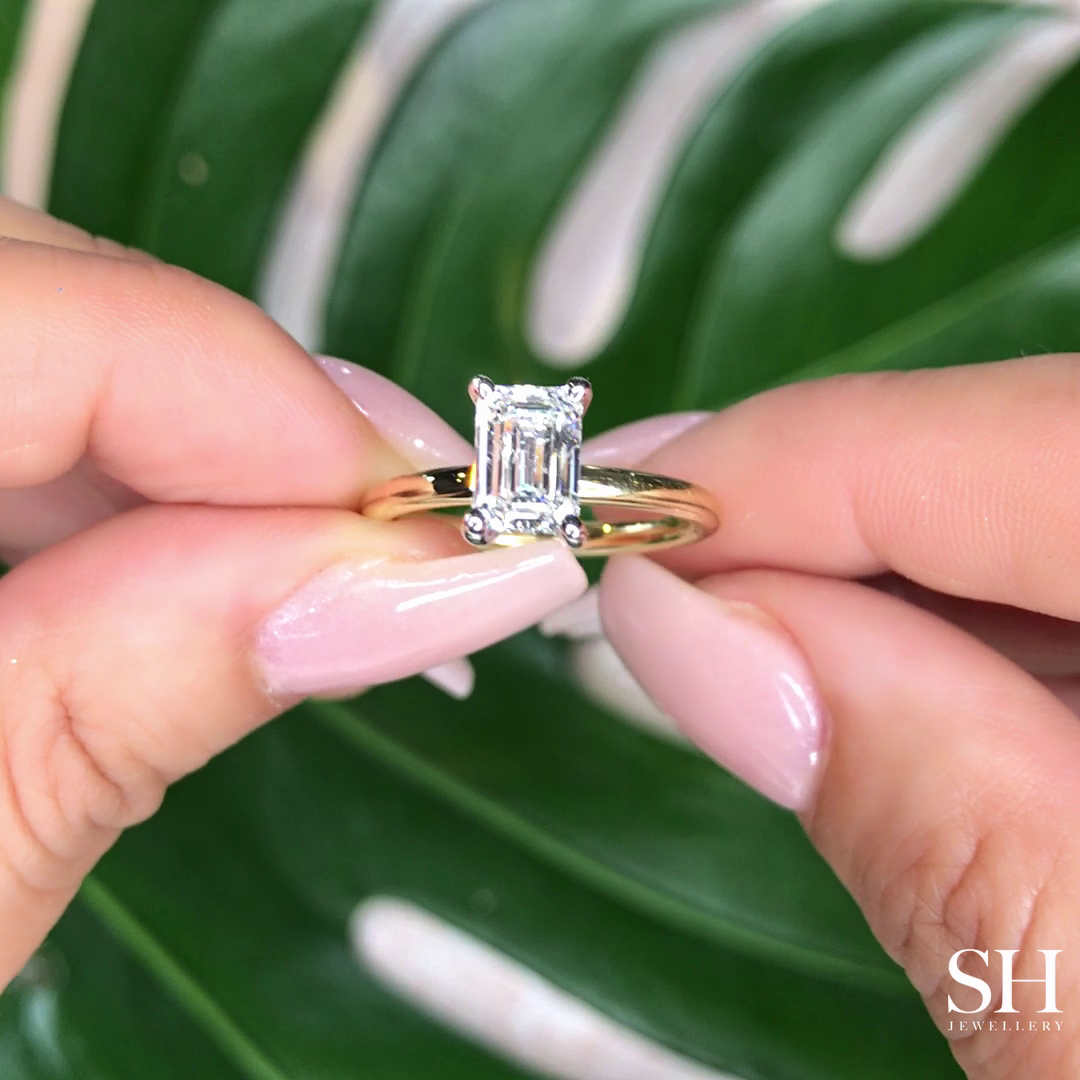
Clarity: Nature's Imprint on Diamond Purity
Natural diamonds, formed deep within the Earth, often bear the marks of their journey. Clarity refers to the presence of internal characteristics, known as inclusions, and external characteristics, known as blemishes.
The GIA grades diamond clarity on a scale from Flawless (no inclusions or blemishes visible under 10x magnification) to Included (inclusions and/or blemishes visible to the naked eye).
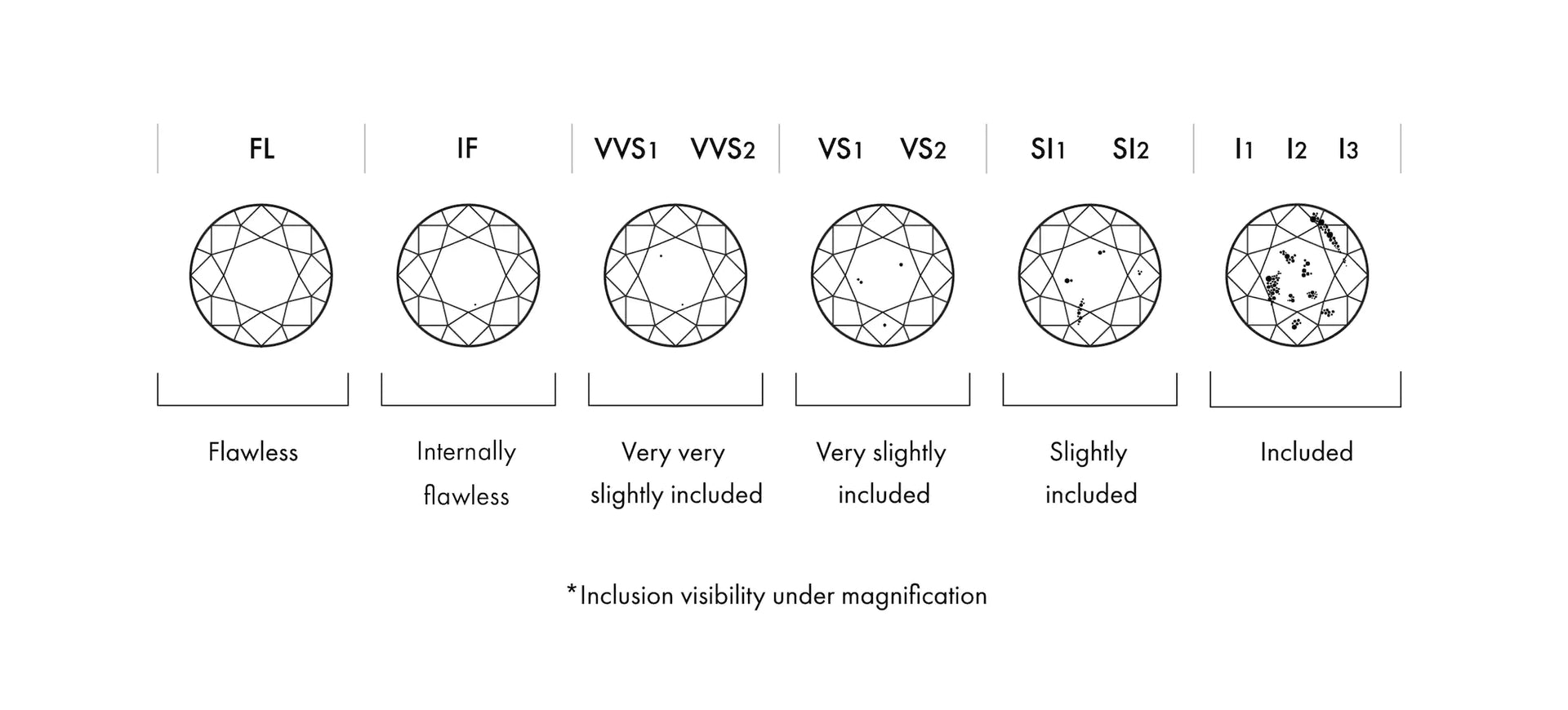
While flawless diamonds are exceptionally rare and command high prices, many diamonds with slight imperfections are still magnificent, and can offer excellent value.
The location, size, and nature of inclusions play a crucial role in determining a diamond's clarity grade. Some inclusions may be strategically hidden by diamond setting types, or may not impact its overall beauty.
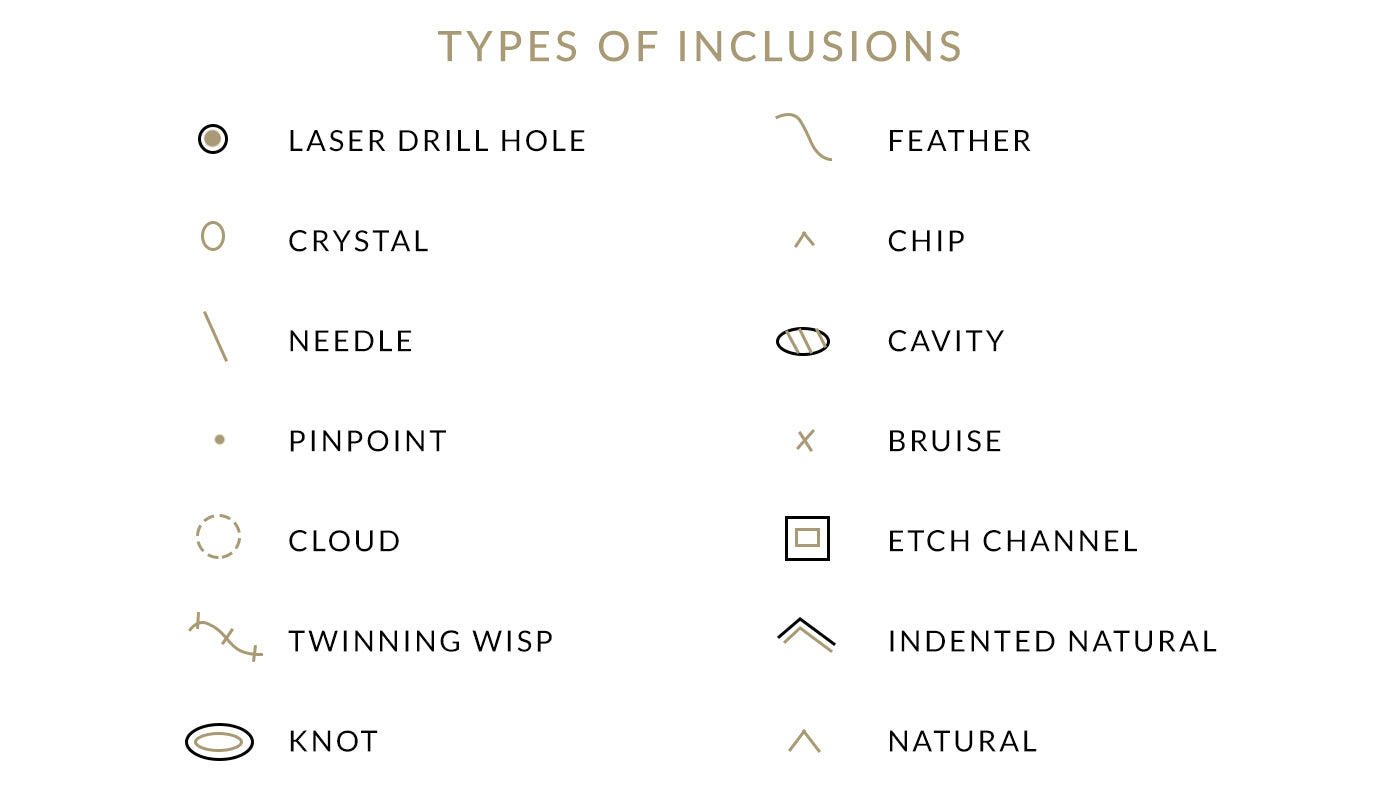
How do I know what a diamond is graded?
Reputable Melbourne jewellers will only sell GIA-graded diamond engagement rings. At SH Jewellery, every hand-selected diamond we stock weighing 0.35ct or more has been independently graded by the GIA, and comes with its very own GIA Natural Diamond Report.
Each report has a unique serial number at the top of the report, which matches a laser-inscribed serial number on the diamond in the area known as the 'girdle'. The serial number on the diamond is invisible to the naked eye, but can be viewed instore using our specialist magnification equipment.
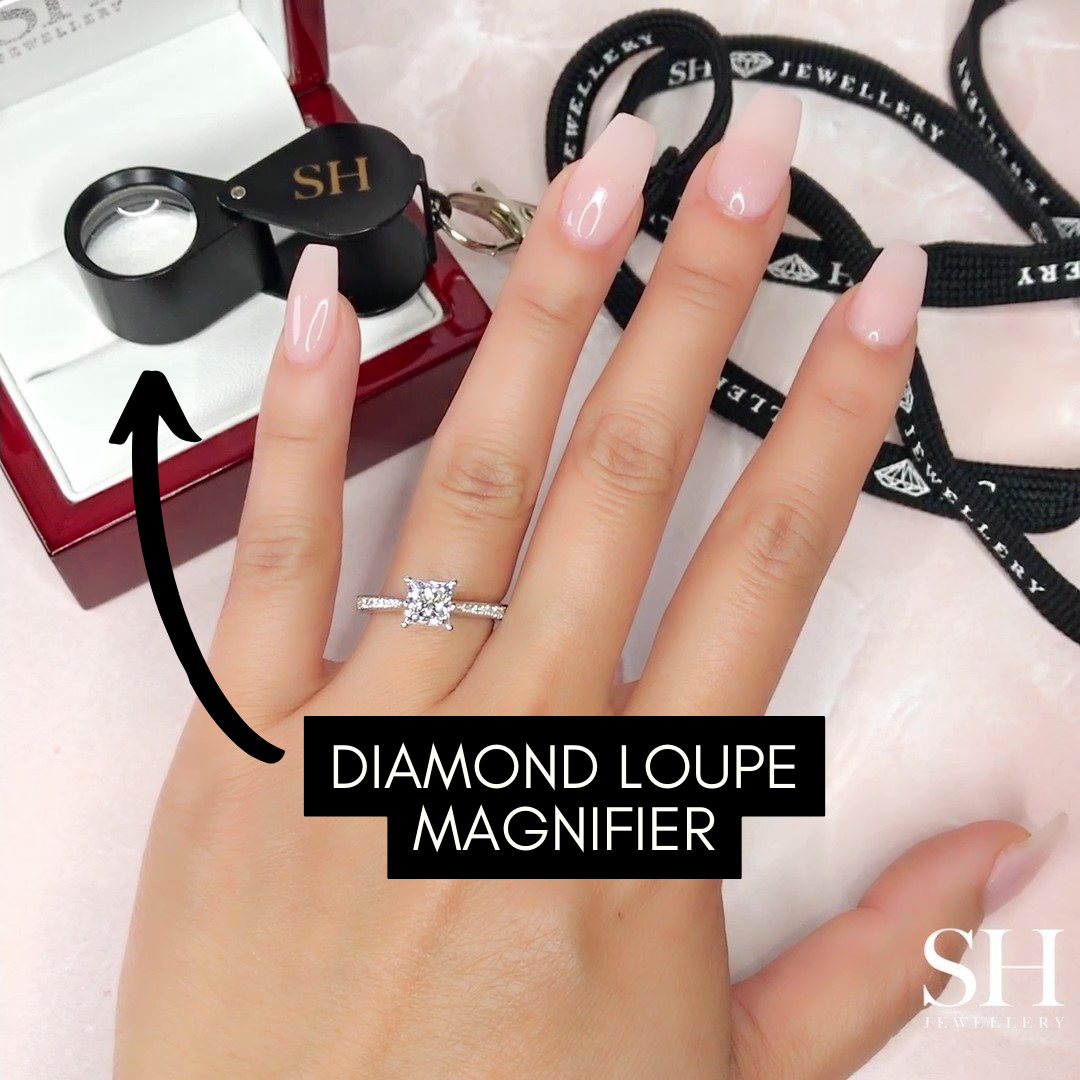
Once identified, this number can then be typed into the GIA website here to verify the stone’s attributes.
Your GIA Diamond Grading Report will include an assessment of the 4Cs, along with a plotted diagram of its clarity characteristics and a graphic representation of the diamond’s proportions.
For standard Round Brilliant Cut diamonds falling in the D-to-Z colour range, the report also includes a GIA Cut grade.
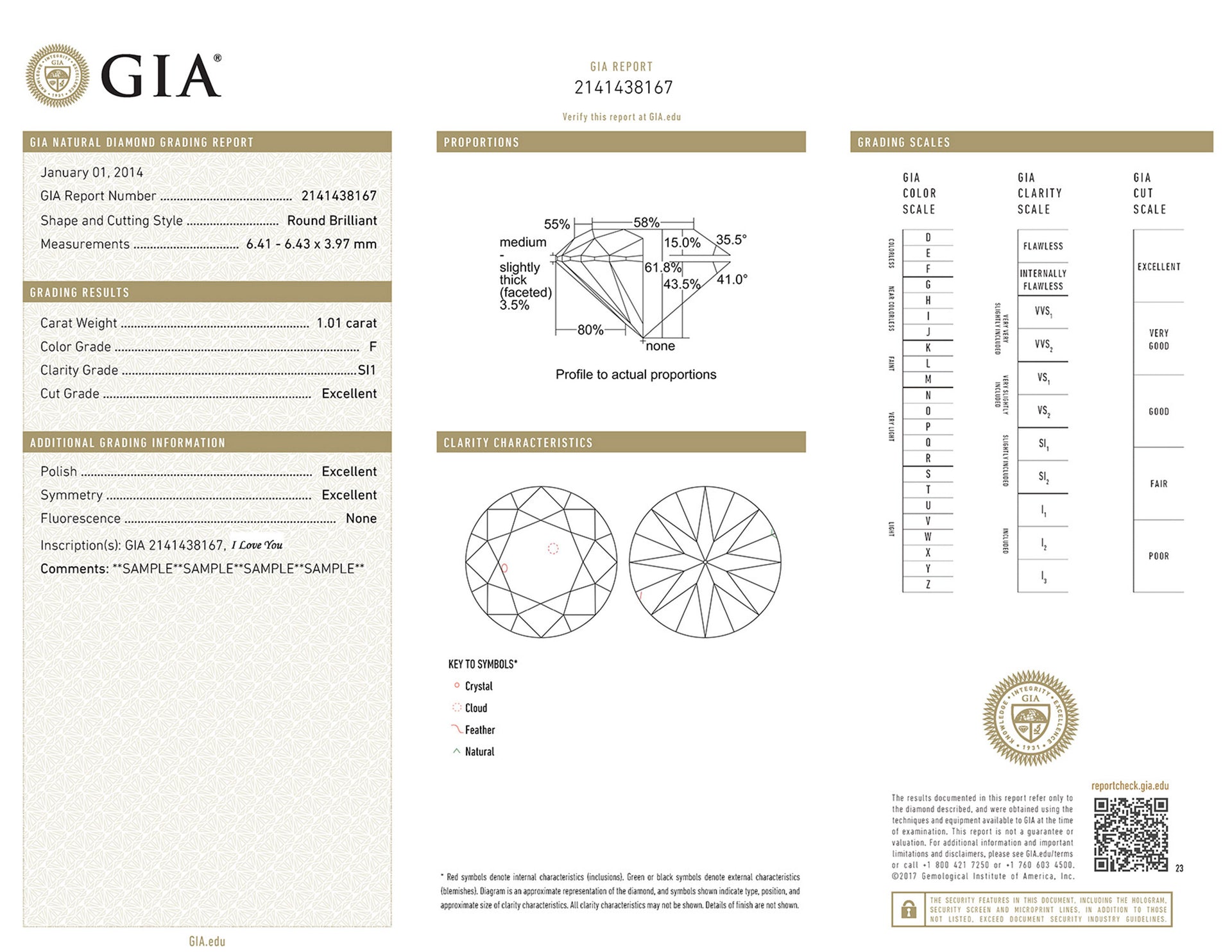
Each C plays a unique role in determining a diamond's overall quality and value, and by understanding these factors, you can make an informed decision when it comes to selecting modern engagement rings that not only fit your budget, but also reflect your personal style.
Remember, a diamond’s brilliance is not just a result of its carat weight or lack of inclusions - it's a symphony of factors working together… The precision of its cut, the spectrum of its colour, and the unique story told by its clarity.
The 4 Cs guide us into the intricate world of diamonds, where science meets art, and nature's wonders are transformed into unique engagement rings, diamond pendants and halo earrings to treasure forever.
A Symphony of Cs

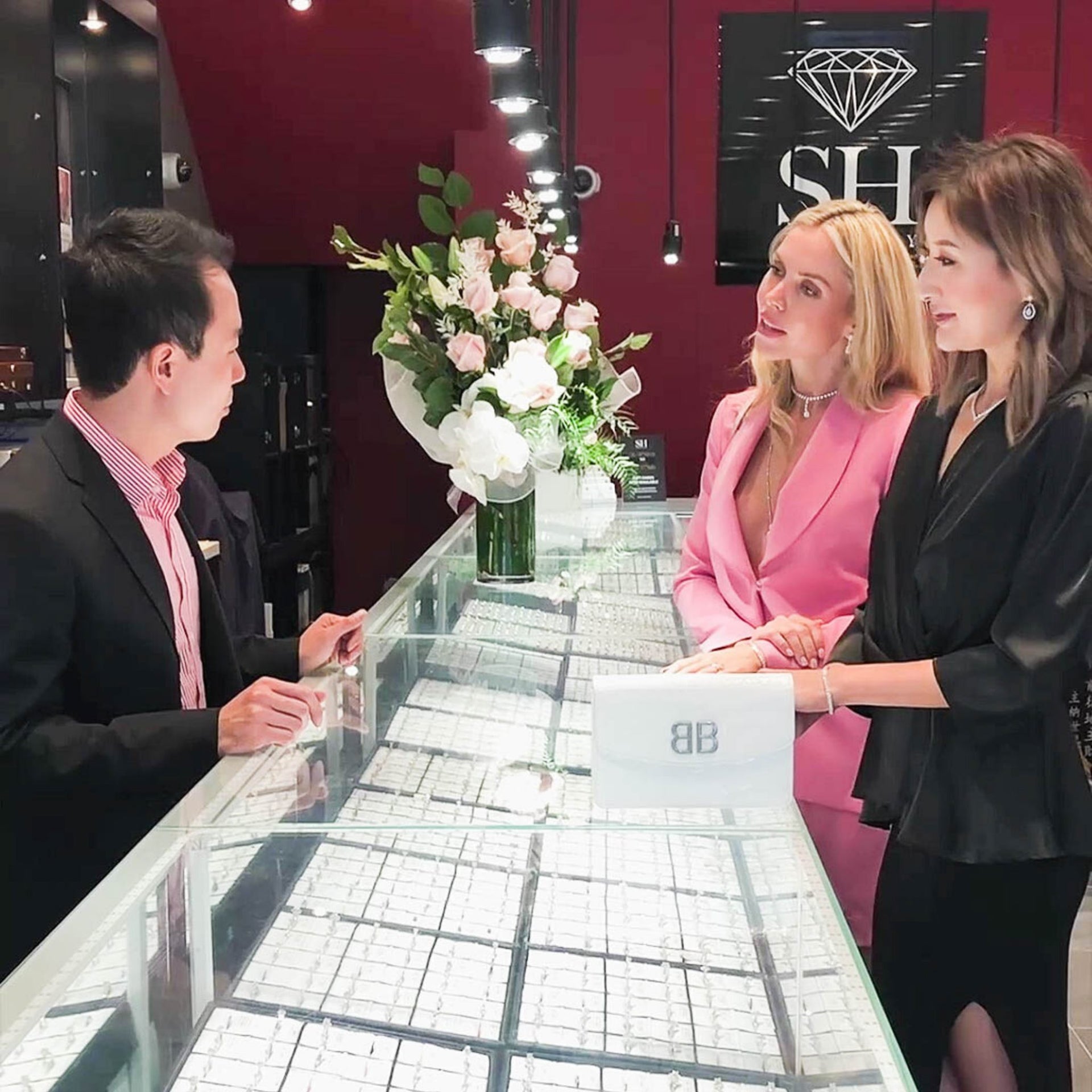
Ask the Experts
At SH Jewellery Melbourne, we’re famous for our GIA certified diamonds, boasting D,E and F colour grading, representing the brightest, whitest diamonds available. Our superlative diamonds are backed by our price match guarantee - this means if you find a comparable, lower-priced diamond anywhere else, simply let us know the quoted price, and we'll happily honour the guarantee if the diamond meets our qualifications.
Our patient, non-commissioned Diamond Consultants are renowned for their education-first philosophy, and can answer any questions you have about the 4Cs to help you find a diamond that your heart, head and budget will all agree on.
Book an appointment to visit our boutique Melbourne showroom, and we’ll ensure we have a dedicated team member ready for your arrival.
Alternatively, shop with confidence online thanks to free delivery, 30-day exchange, engagement ring payment plans, and free ring re-sizing within 6 months of purchase.










